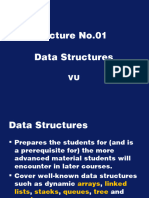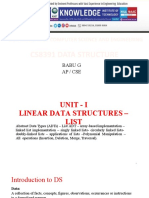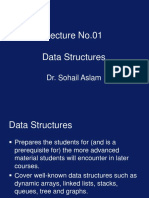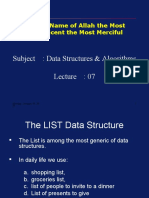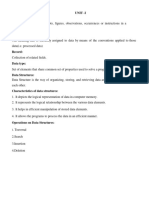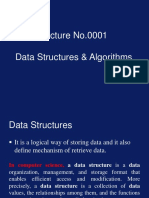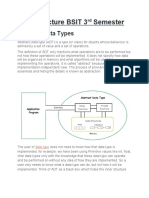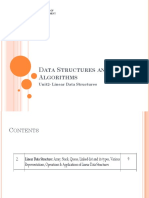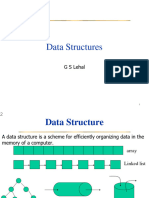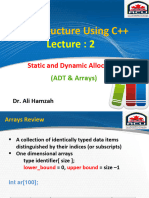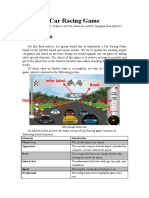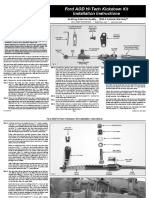0% found this document useful (0 votes)
22 views33 pagesLecture 01
This document discusses data structures and algorithms. It provides an overview of common data structures like arrays and lists, explaining how they are implemented and some common operations. Arrays store data in contiguous memory locations and allow fast access by index. Lists store data in a linear order and support insertion and removal of elements through a current index pointer. The document compares the efficiency of different data structures and how to select the appropriate one based on the problem constraints.
Uploaded by
Saad ZaheerCopyright
© © All Rights Reserved
We take content rights seriously. If you suspect this is your content, claim it here.
Available Formats
Download as PDF, TXT or read online on Scribd
0% found this document useful (0 votes)
22 views33 pagesLecture 01
This document discusses data structures and algorithms. It provides an overview of common data structures like arrays and lists, explaining how they are implemented and some common operations. Arrays store data in contiguous memory locations and allow fast access by index. Lists store data in a linear order and support insertion and removal of elements through a current index pointer. The document compares the efficiency of different data structures and how to select the appropriate one based on the problem constraints.
Uploaded by
Saad ZaheerCopyright
© © All Rights Reserved
We take content rights seriously. If you suspect this is your content, claim it here.
Available Formats
Download as PDF, TXT or read online on Scribd
/ 33

